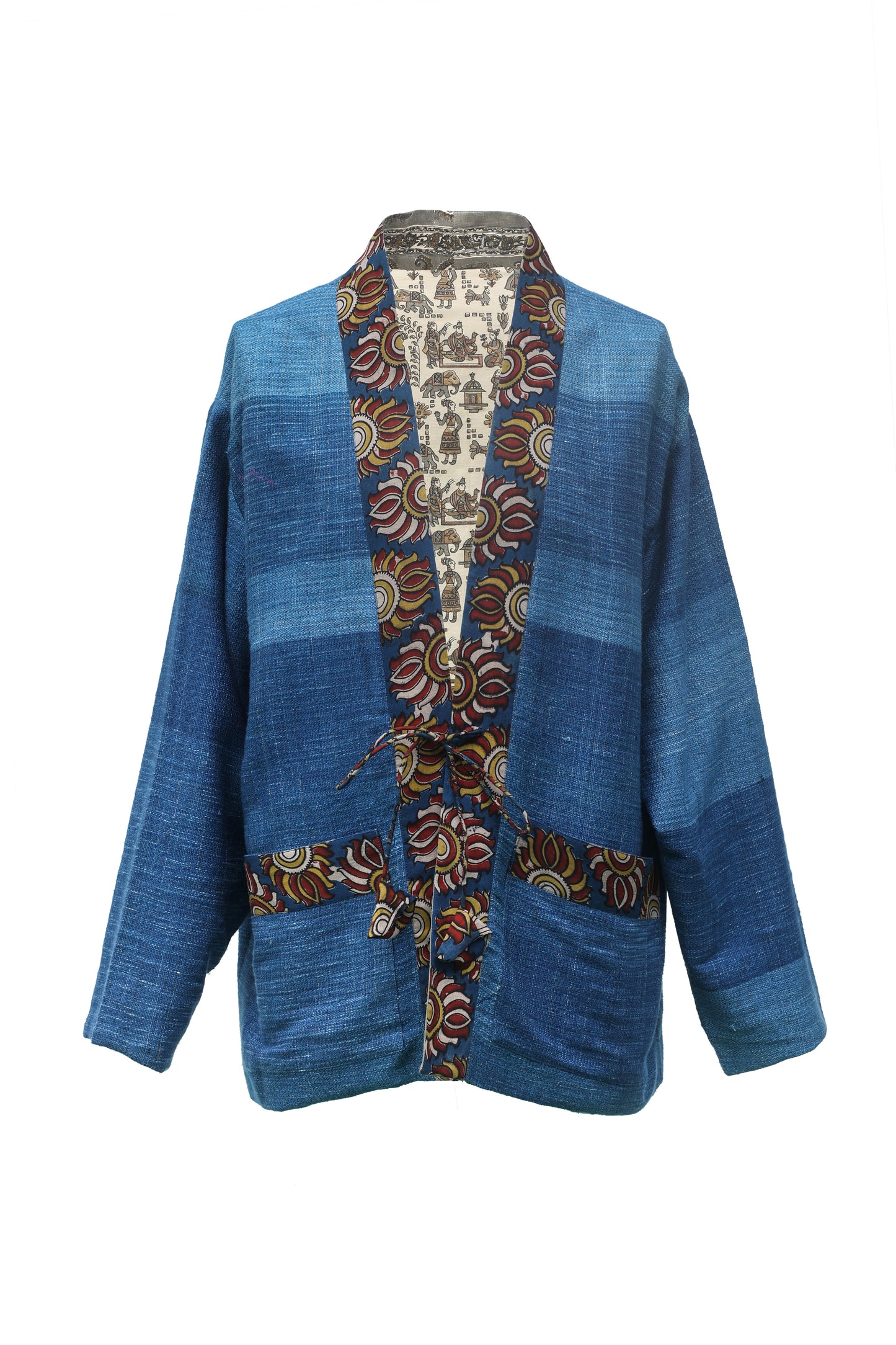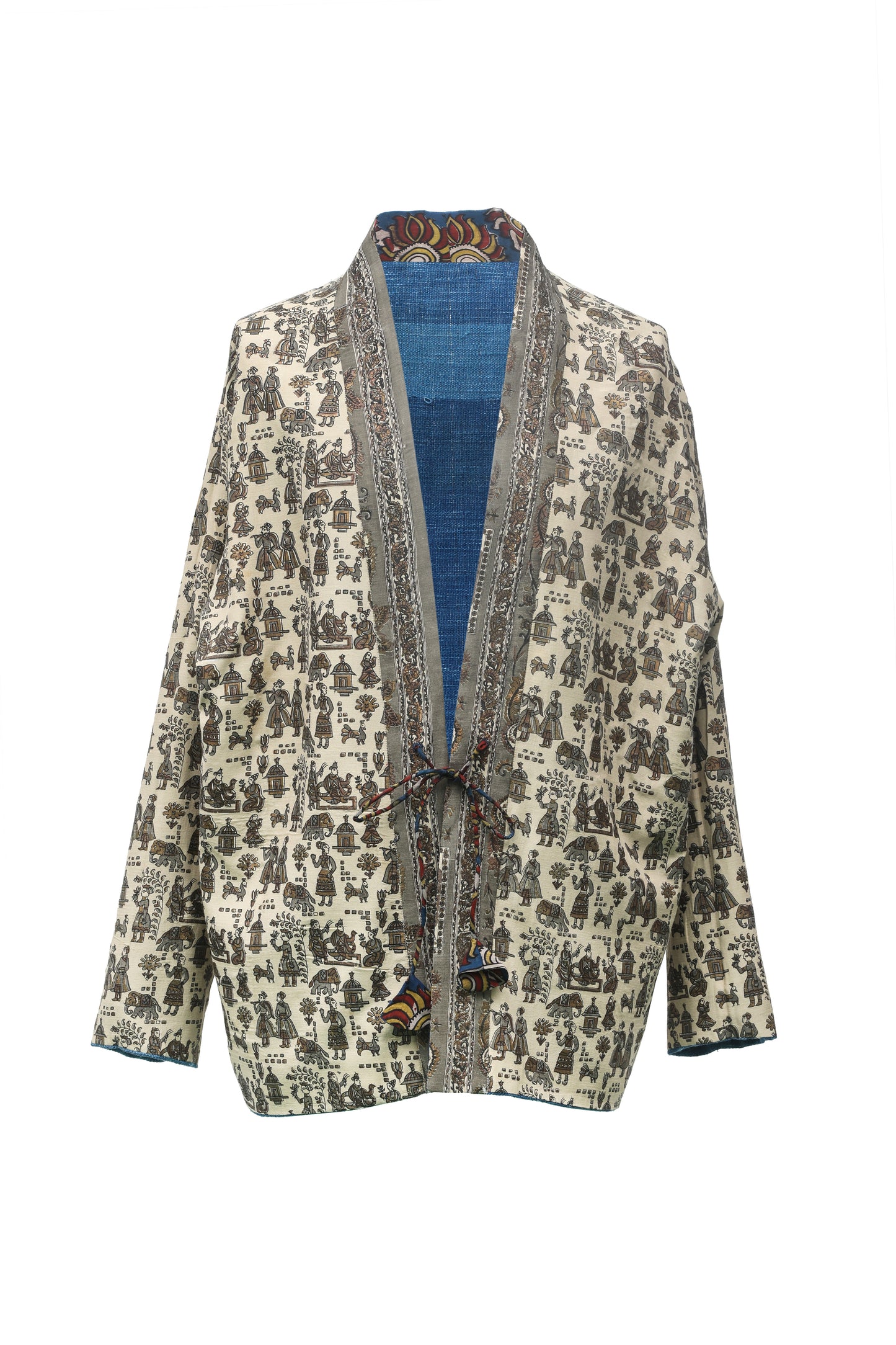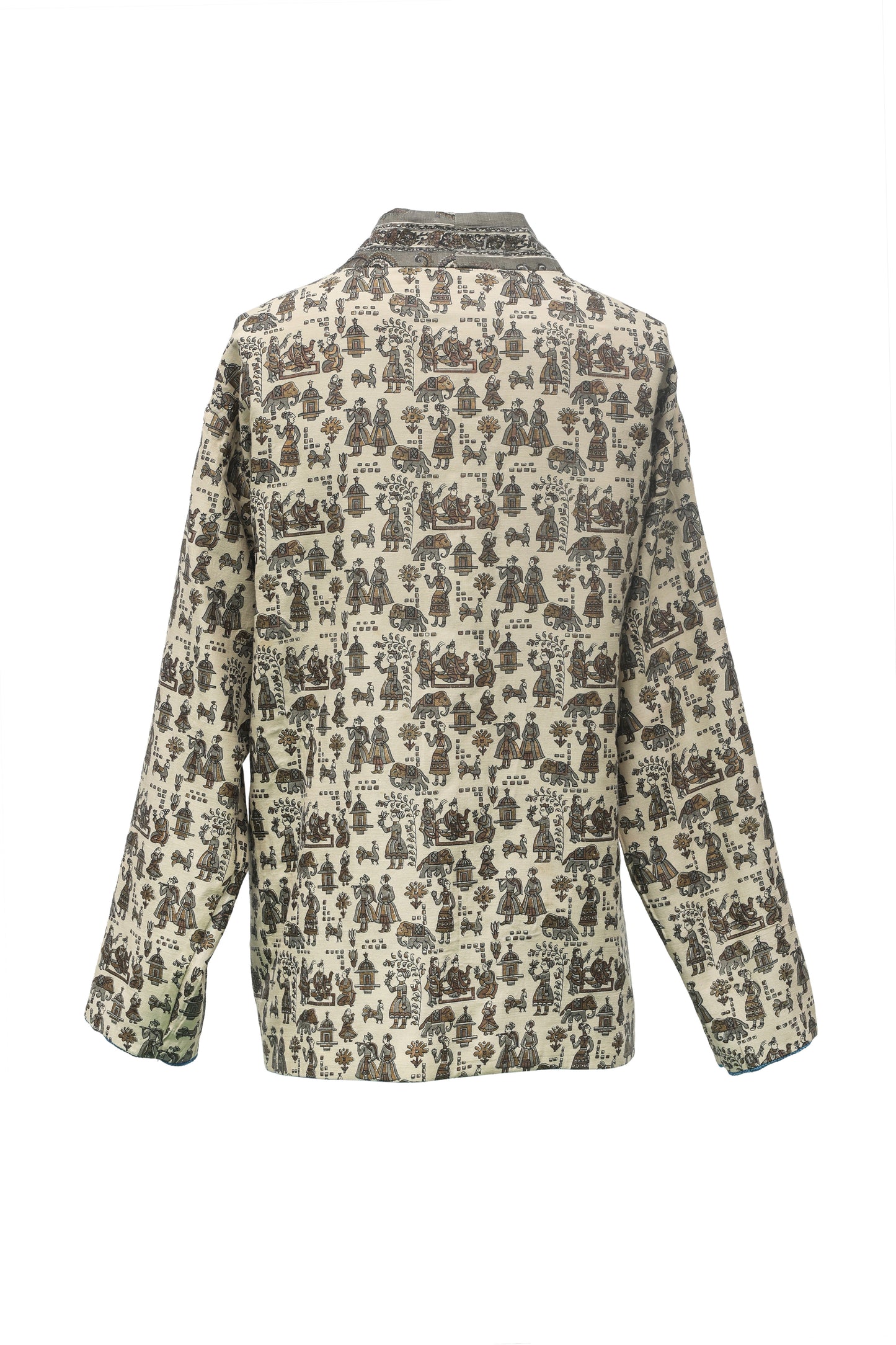KAJ.036
This one-of-a-kind garment is reversible and unique from each side.
This sophisticated kimono style jacket is another gem in our Indigo range. It features vintage handwoven ai-zome cotton from Japan combined with antique hand painted kalamkari work from Telangana.
Indigo was probably introduced to Japan from southern China sometime soon after the fifth century.The oldest evidence of indigo dyeing in Japan dates back to the 10th century. In Japanese, indigo dyeing is known as AI-ZOME. The plants can grow about two and a half feet high. Their stems are green or almost red, and their large leaves are green, but turn dark blue when dried.
In Japan polygonum or tade, is used in the natural indigo dye process. The oldest evidence of indigo dyeing in Japan dates back to the 10th century.
The first ai-zome textiles came to Japan from Southeast Asia. A number of indigo textiles can be found in the 8th century treasure trove in Nara’s Shoso-in Repository (part of Todai-ji Temple). Japanese ai-zome dyeing has its roots in the Heian period (794-1185). By the Kamakura period (1192-1333) the Japanese method was well established.
Japanese ai-zome culture exploded in the Edo period (1600-1868) when laws were passed preventing the lower classes from wearing silk and cotton became the popular alternative. In addition to being readily available (the indigo plant is native to Japan), ai-zome was also color fast on cotton and thus faded slowly, adding to its appeal.
There are five basic materials used in Japanese indigo dyeing: sukumo (the tade leaves of the Japanese indigo plant), fusuma (wheat bran), sake, hardwood ash, and lime.
Ai-zome dyeing is a very complicated and long process. The chemical compound indican contained in the raw leaves is converted into indigo by fermenting the leaves. The traditional process uses only natural materials and no chemicals of any kind. When the fermented indigo solution is ready the cloth is repeatedly soaked in the vat. After squeezing the excess liquid from the textile it is spread wide and hung on a rope. This allows the textile to oxidize and thus fix the color. Just after the textile is removed from the vat it looks dark green. As it oxidizes it turns blue. The soaking and oxidizing steps are repeated over and over until the final desired color has been produced. For the darkest blues soaking lasts 30 minutes and is repeated 30 to 40 times.
Kalamkari is a type of hand-painted or block-printed cotton/silk produced in Isfahan Iran, and in the Indian state of Andra Pradesh, Telangana and West Bengal.
Only natural dyes are used in Kalamkari, which involves twenty-three steps. An ancient Indian art form older than 3000 years, this form of ‘work with a pen’ is very prevalent and sought after
Under medieval Islamic rule, the term Kalamkari was derived from the words "kalam", which means "pen" in Telugu, and "kari", which means craftsmanship. This became popular under the patronage of the Golconda sultanate.
Kalamkari specifically depicts epics such as the Ramayana and Mahabharata. However, there are recent applications of the Kalamkari technique to depict Buddha and Buddhist art forms In later periods, many aesthetically good figures such as musical instruments, small animals, flowers, Buddha and few Hindu symbols, like yantras were also introduced to Kalamkari.
• Please note, that due to antique nature of the fabrics there may be signs of past experiences - we believe it adds value and a meaning to the garments.
• Some naturally dyed fabrics even after lasting generations may leave colour
• Please keep in mind that all Karatoyaa pieces are Dry Clean only with the Professional service provider.
Couldn't load pickup availability
DETAILS
DETAILS
KAJ is a collection of one of kind kimono style jackets, created from unique antique and vintage textiles thta have been collected over the years from around the world. They are one fit all sizing and created to bring love and joy to its beholder. Kindly note, that due to antique origin of the textiles , product has signs of past lives, we believe it adds magic and value to each piece.
COMPOSITION
COMPOSITION
upcycled cotton
SIZE & FIT
SIZE & FIT
ONESIZE
waist - 146cm
sleeve - 62cm
CARE
CARE
Please keep in mind that all Kārātoyaa pieces are Dry Clean only with the Professional service provider.
Share








